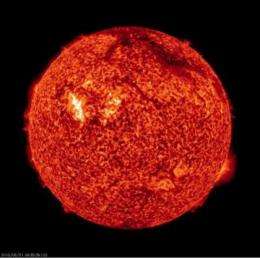The 11-year solar cycle continues during prolonged sunspot minima

Streaming into the solar system at nearly the speed of light, galactic cosmic rays (GCRs) are a high-energy mix of protons, electrons, and atomic nuclei. As they pass into reach of the outflowing solar wind, the propagation of GCRs is inhibited. Galactic cosmic rays that make it to Earth interact with the atmosphere, creating a shower of heavy isotopes including beryllium-10. Beryllium-10 isotope concentrations recorded in ice cores provide a long-term, high temporal resolution record of galactic cosmic ray flux.
The rate of GCRs flowing into the solar system is thought to be relatively stable, so researchers suspect that shifts in these long-term isotope records must be driven by a change in the rate at which GCRs reach Earth. The propagation of GCRs to Earth, in turn, depends on the open solar flux, the fraction of the total solar magnetic field that is carried out into the solar system by the solar wind. Open solar flux increases with sunspot number and shifts with the orientation of the heliospheric current sheet, the wavy surface where the Sun's the magnetic field switches polarity from northward to southward. Thus isotope concentration records can serve as a long-scale record of solar activity.
Drawing on two independent ice core records, Owens et al. modeled the open solar flux back to 1610, a period that includes the Maunder Minimum, a 65-year stretch starting in 1650 when astronomers observed hardly any sunspots. They find that during this period, beryllium-10 isotope concentrations continued to oscillate following the roughly 11-year solar cycle, despite the dearth of sunspots. They suggest that the heliospheric current sheet's cyclical behavior didn't change during the period, and hence the regular cycling of the open solar flux, and the changing penetration of galactic cosmic rays, continued.
More information: Heliospheric modulation of galactic cosmic rays during grand solar minima: Past and future variations, Geophysical Research Letters, doi:10.1029/2012GL053151 , 2012
Journal information: Geophysical Research Letters
Provided by American Geophysical Union



















